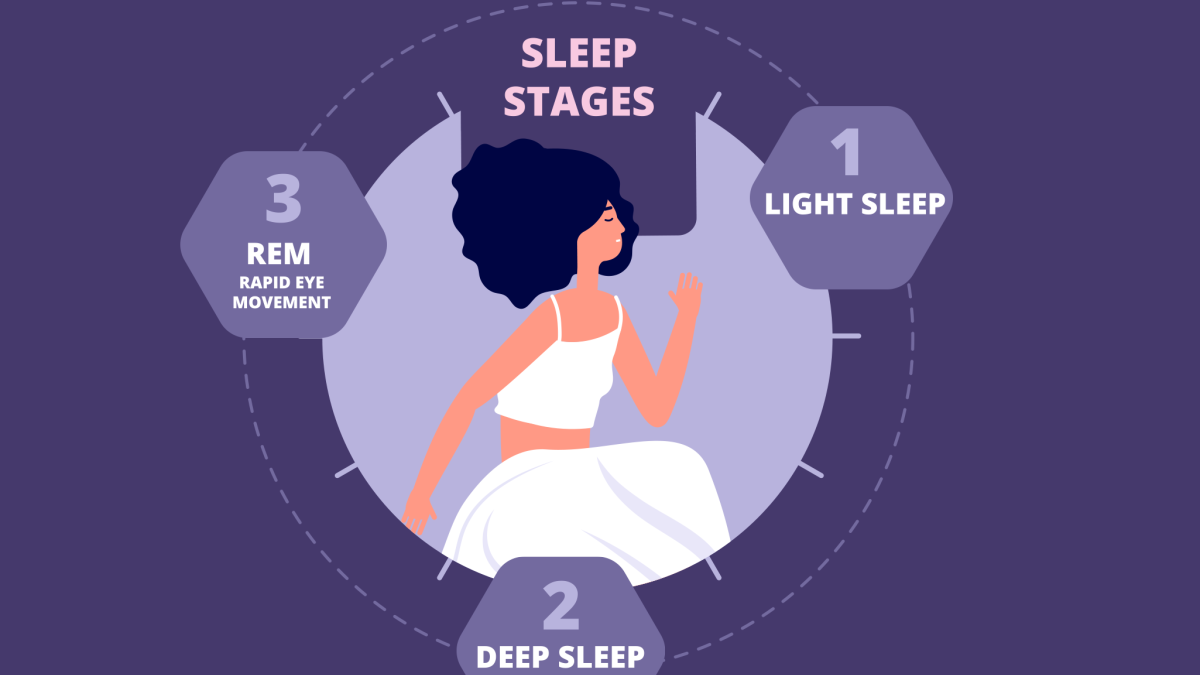Mastering the art of sleep: Exploring NREM and REM stages

The sleep cycle is a recurring pattern that our body and brain undergo during a typical night's sleep.
On average, a complete sleep cycle lasts approximately 90 to 120 minutes, and an average person experiences four to five cycles in a night.
Each cycle is comprised of two main categories of sleep:
- Non-rapid eye movement (NREM) sleep, which is divided into three sub-stages - stage N1, stage N2, and stage N3
- Rapid eye movement (REM) sleep
The sleep cycle's sequential progression through NREM and REM stages is essential for allowing your body and mind to rest, restore, and recharge for the next day.
The Sleep Stages Explained
Stage 1 & 2 - Light sleep
Stage 1, also called N1, is the transition from wakefulness to sleep and generally lasts only a few minutes. During this stage, your brain slows down and your heartbeat, eye movements, and breathing slow with it. If somebody were to wake you up, you may state that you were not asleep.
During stage 2, or N2, your heartbeat and breathing slow down even further, body temperature drops, and your brain begins to produce bursts of brainwave activity known as ‘sleep spindles’. These spindles are a pattern of brain waves that are thought to play a role in memory consolidation - where your brain gathers, processes, and filters new memories you acquired the previous day. Sleep spindles also appear to lower your response to outside stimuli while sleeping.
Stage 3 - Deep sleep
Stage 3, or N3, is the deepest stage of sleep when your body performs a variety of important health-promoting tasks. In this stage, breathing and heartbeat are at their slowest rate, and brain waves known as delta waves begin to emerge - which are the slowest recorded brain waves in human beings. They are associated with the deepest levels of relaxation and restorative sleep. As you age, you are likely to spend less time in this slow, delta wave sleep and more time in stage N2 sleep.
Experts believe that this stage is crucial for physical restoration and recovery - allowing for tissue repair and growth, and cell regeneration. It is also said to strengthen the immune system and other key body processes.
Stage 4 - Rapid Eye Movement (REM)
Rapid Eye Movement (REM) sleep is associated with dreaming. During REM sleep, brain activity increases, resembling the patterns observed during wakefulness. Your eyes move rapidly, blood pressure, heart rate and breathing increase and your muscles become temporarily paralysed to prevent dreams from being acted out. REM sleep is essential for cognitive functions such as memory consolidation, learning, and creativity. It also plays a role in emotional regulation and mood stability.
In conclusion, the sleep cycle and sleep stages provide us with a deeper understanding of the complex processes that occur during sleep. NREM and REM sleep each serve unique purposes in rejuvenating your body and mind.
Sources:
- https://www.sleepfoundation.org/stages-of-sleep
- https://www.sleepfoundation.org/how-sleep-works/sleep-spindles
- https://www.healthline.com/health/healthy-sleep/stages-of-sleep
- https://www.verywellhealth.com/the-four-stages-of-sleep-2795920
- https://www.betterhealth.vic.gov.au/health/conditionsandtreatments/sleep
- https://www.sciencedirect.com/topics/neuroscience/delta-wave
- https://www.ncbi.nlm.nih.gov/books/NBK526132/
Share this article

